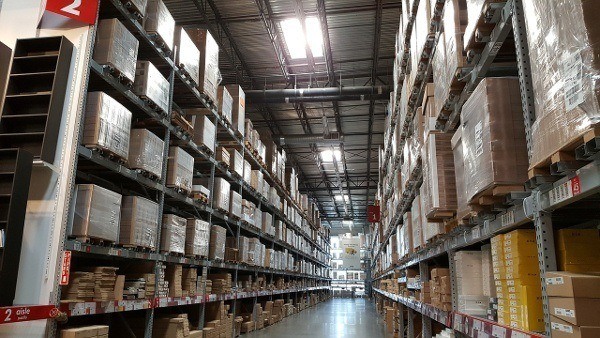‘Just in time’ inventory has now become just impossible. Starting with the pandemic and exacerbated by supply chain disruption, rising prices and volatile global economic conditions, Many retailers are now carrying excess inventory which negatively affects cash flow and increases storage costs.
This post takes a closer look at the prevalence of surplus inventory, the roots of the problem, and what you can do about it.
How did we get here?
During the pandemic, eCommerce growth was explosive. Getting reliable deliveries from suppliers might have been problematic, but increased demand from consumers ensured that surplus inventory was not a problem.
The recent economic downturn, however, along with inflation and currency fluctuations have hurt demand. Consumers are buying less, looking more for heavily discounted prices and demanding better buying experiences.
Now, many retailers are faced with too much stock and grappling with how to handle it.
Excess inventory: a solution that turned into a problem
One way to manage an unpredictable supply chain is to order more than you need. The upside is that when customers come to your eCommerce site, you can carry hard-to-find items that would take months to find on other sites.
From that perspective, carrying excess inventory seems like a winning strategy to get the leg up on the competition.
However, it also requires adequate customer demand to ensure proper inventory turnover.
While it may have started out as an effective strategy for ensuring customer satisfaction, recent disclosures by leading retailers show how it has morphed from a stop-gap solution into a serious problem.
According to S&P Capital IQ and FTI Consulting, retail inventories increased over 30% over last year, with leading retailers including Nike, Target and Hasbro revising their guidance and committing to reducing excess inventory levels.
The consensus amongst industry analysts is that retailers have overcompensated for supply chain disruptions by ordering excess inventory.
As consumer demand drops off, retailers must take a more proactive approach to excess inventory management as the holiday peak season approaches.
What causes excess inventory?

Clearly retailers want to provide the best service for their online shoppers by having their most popular merchandise in stock. This is based both on historical data and projections for customer demand. The goal is to have enough stock availability to cover customer orders without carrying excess inventory.
With increasing supply chain complexity and so many product offerings, inventory management software has become an essential tool for retailers who want to prevent excess stock and manage it efficiently. Companies who do not take advantage of the latest inventory and delivery management software will have a hard time handling their excess inventory challenges.
There are many reasons why retailers might unintentionally wind up with too much inventory of specific merchandise, but in general, the main reasons for surplus inventory include:
- Overpurchasing
- Inaccurate sales projections
- Product returns and canceled orders
- Negative economic conditions
- Volatile consumer demand
- Delivery delays and failures
Now that we have examined the root causes that can lead to excess inventory, let’s take a look at the damage that can be caused if it is not brought under control.
What are the main disadvantages of excess inventory?
First and foremost, there is the cash flow issue. A business relies on consumers to purchase goods at a projected rate to finance operations and maintain a good revenue flow. When extra inventory sits in the warehouse, that stock is not generating the cash that these businesses are counting on.
To make matters worse, it’s not just about lost revenues. Stock that’s taking up shelf space in the warehouse also increases operating costs.
Rental costs and manpower are becoming more expensive, and when products spend too much time on shelves in the warehouse, they may deteriorate in quality or just become obsolete inventory (seasonal trends that go out of style, for example). The costs of product storage add up, and are putting a real strain on retail profit margins.
It also affects company financial projections as businesses have to adjust guidance on their margins due to offering heavy discounts to get rid of inventory which is costing them more than they anticipated due to decreased inventory turnover and increased storage cost. This hurts profitability and has a negative impact on company value.
Excess inventory challenges are not the same across all retail sectors as specific areas such as home furnishings, footwear and apparel are having a tougher time than others. It also creates challenges for marketing departments to come up with campaigns that are compelling without appearing desperate to dump surplus inventory at any cost.
5 key issues with excess inventory:
- Decrease in operating capital
- Loss of revenue.
- Higher storage cost
- Potential obsolete inventory
- Lack of visibility into inventory turnover
Analyzing these inventory issues is an important step in understanding how excess stock becomes a problem, how to solve it and prevent excess inventory going forwards.
Options for excess inventory management
Now that we know the potential damage caused by excessive inventory, what can retailers do to manage the situation?
The most important thing for managing the situation is to leverage the latest technologies for inventory tracking across multiple warehouses, while interfacing with online ordering and delivery management platforms.
These platforms should use both historical data and machine learning to give companies information regarding the real-time status of their inventory, as well as making the most accurate suggestions possible regarding the target amount of inventory required in consideration of the latest market trends.
Once the technology is in place, a retailer can turn their attention to the basic three options they have to manage their excess stock.
According to a recent KPMG survey, retail executives intend to manage their excess inventory by:
- Selling excess inventory at a discounted price
- Keeping excess inventory until next season
- Selling the bulk of excess inventory to off price retailers
1. Sell in bulk to discount stores
While this is a less complicated solution as most of the inventory is sold in a one transaction to a single entity, the discounts demanded by off price stores and liquidators are so steep that it makes the most sense when inventory is about to become obsolete or some other urgent situation.
2. Keep in stock and wait for next season
Holding inventory until next season only works for goods that can be stored for at least a year and won’t lose value over that time period.
When calculating profit margins, it’s also important to take into account the additional storage costs that will be incurred until the merchandise is sold next season.
3, Sell at a discount
This practice is by far the most common practice as it has the best chance of recouping some of the losses from excess inventory.
For one, it reduces costs by moving goods out of storage space and into consumers’ homes.
There is also much more room for creative discounting based on offering consumers multiple items or special delivery options. This gives businesses a fighting chance to regain their profit margin on some items, as opposed to selling the entire inventory to a discount store and writing off the loss.
Companies can also highlight low-cost delivery options for discounted items, and use the delivery experience as well as lower prices on products to differentiate themselves from competitors.
Offering the right last mile delivery options to consumers and optimizing delivery networks are key to managing excess stock in the most cost-effective way possible.
Using technology to turn over inventory quickly

During these uncertain times with rising prices and supply chain disruption, it’s challenging to anticipate inventory levels and predict market demand.
Online consumers are looking for the lowest discounts along with most delivery options, while businesses want to find creative ways to sell excess inventory at discounted prices and still make some money.
This is where increasing delivery efficiency and cutting last mile delivery costs can be directly linked to successfully reducing excess inventory levels. Businesses can use a Delivery Management Platform (DMP) to customize their last mile delivery operations for efficiency, and offer the delivery options that online consumers have come to expect.
How to eliminate excess inventory
Supply chain disruption and the inability to depend on suppliers resulted in keeping larger inventories and the so-called move from “just in time” to “just in case” inventory control.
Unfortunately, what was meant to be a solution for fulfilling customer orders and increasing revenues has turned into a problem that can result in lower margins and lost revenues.
The good news is, using today’s technology, retailers are in a better position than ever to manage excess inventory, cut losses and even turn a profit.
By using creative discounts that encourage consumers to purchase multiple items, retailers may be able to increase sales volume to offset some of the lost margins.
Likewise, a drop in activity also has the potential to lower storage and delivery costs, take some of the pressure off margins, and give retailers a little breathing room to reassess their inventory and pricing strategies.



